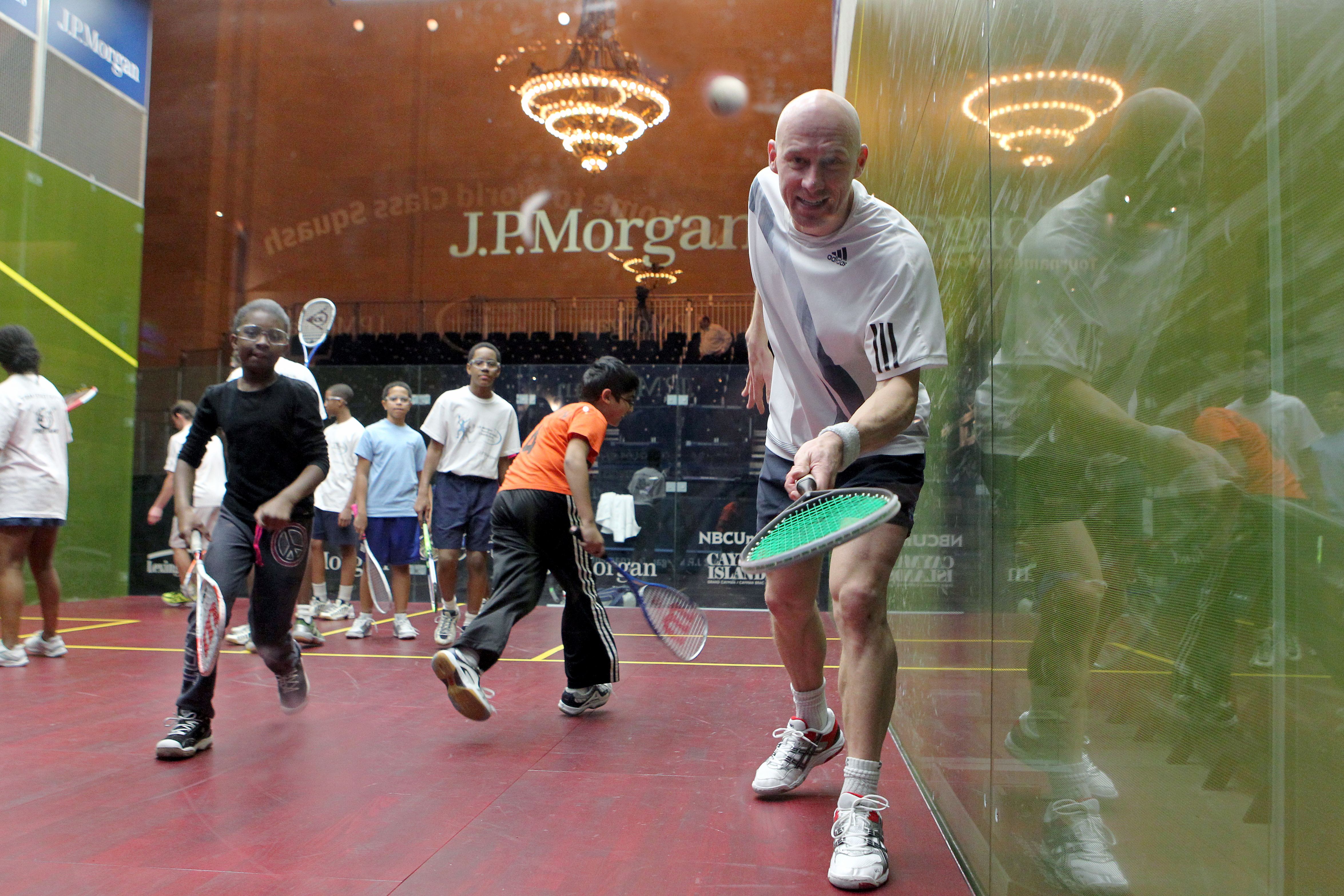By Richard Millman, Owner – The Squash Doctor Corporation
Watching elite level players play often elicits the comment that it all looks ‘so effortless.’
Indeed the graceful flow of many rallies is one of the reasons that Squash has struggled with its fight for media success. After all, if it looks so easy, then surely it can’t be that demanding—can it?
But that same effortlessness is the product of many hours of replication of a seamless amalgam of movement and stroke—designed to put the exponent always ahead of the game.

Time, the critical commodity of Squash, must be managed efficiently, if that much-admired seamless flow of movement and stroke production is to be achieved.
This starts in practice.
Any drill needs to played with rhythm as a primary goal. If you and your partner wish to gain a strong sense of achievement as a result of a good practice then minute attention to detail is essential. Each repetition of movement and stroke needs to be a carbon copy of the original. If not, fluctuations in time spent on each element create inconsistencies and imbalances which, in turn, lead to loss of position and control and, sometimes, mistakes.
If a drill breaks down, don’t shut down; rather, keep the rhythm flowing. Even if the ball goes out, or hits the tin or bounces twice in a practice—keep the drill going (providing the basic quality can be maintained). In this way the continued flow further adds to the sense of achievement gained and ultimately positively reinforces behaviors that will produce flow, efficiency and confidence under pressure in a match.
Once you get to the match situation you must try and maintain your rhythm while you build each point, game and match.
If rhythm is such an essential to superior performance, then a loss of rhythm must equally lead to inferior performance. We see this when students work with coaches and when the coach makes a bad feed or sometimes too good a feed, the body language of the student shows that they have shut down and have ceased their focus. If you take regular lessons, make it your mission to focus on continuity and don’t shut down if the coach hits a feed that is out or down or difficult. Equally important, don’t drop your intensity if you hit a shot that you are less than satisfied with—maintain that rhythm and you will be surprised by how strong a sense of achievement you gain at the end of the session.
Tactically, seek opportunities to break up your opponent’s rhythm. Whether you realize it or not, your opponent responds to cues in your behavior when preparing their own reactive behavior.
We saw this phenomenon and its disruption in Tennis when Monica Seles first started grunting and yelling when hitting the ball. The grunt started to mentally and physically prepare the opponent for the timing of Seles’s shots. Of course when she wanted to throw the opponent’s rhythm out, she would purposefully not grunt, thus changing the rhythm of the delivery.
In Squash this can be done in many ways. You can start a game using one basic pace or rhythm and lull the opponent into the belief that this is the normal pattern for them to expect. Then at a key moment (say a ‘big’ point, like 7-all and 2 games-to-1 up) suddenly change the rhythm unexpectedly.
Alternatively you can change the rhythm of the serve. use the same body language to deliver a slow serve a dozen or so times and then, showing exactly the same body language, suddenly throw a fast serve in. This is unlikely to lead to an out- right winner, but it is very likely to throw the opponent’s rhythm off enough to give you a slightly loose return from which you can gain an edge in the rally.
Do the same in reverse—use the power serve as your stock serve and then, again with the same body language, suddenly throw in the change-up slow ball. You will be pleasantly surprised by the frequency with which this tactic causes an opponent (even pros) to mis-time their return.
So to summarize:
Rhythm for improvement in practice (don’t stop when a ball goes out or down or bounces twice—just maintain the rhythm).
Rhythm to increase your sense of achievement.
Rhythm to maximize your learning experience (don’t shut down when the drill or rally breaks down).
Rhythm to groove your technique (replicate every piece of your behavior—even down to how you throw the ball to start and gather it when you or your partner make an error).
Vary rhythm as an offensive weapon, both on single shots (such as the changeup serve) and overall in rallies to break the comfort and control of an opponent who has gotten used to your original rhythm.
So get your groove on and find your rhythm!





